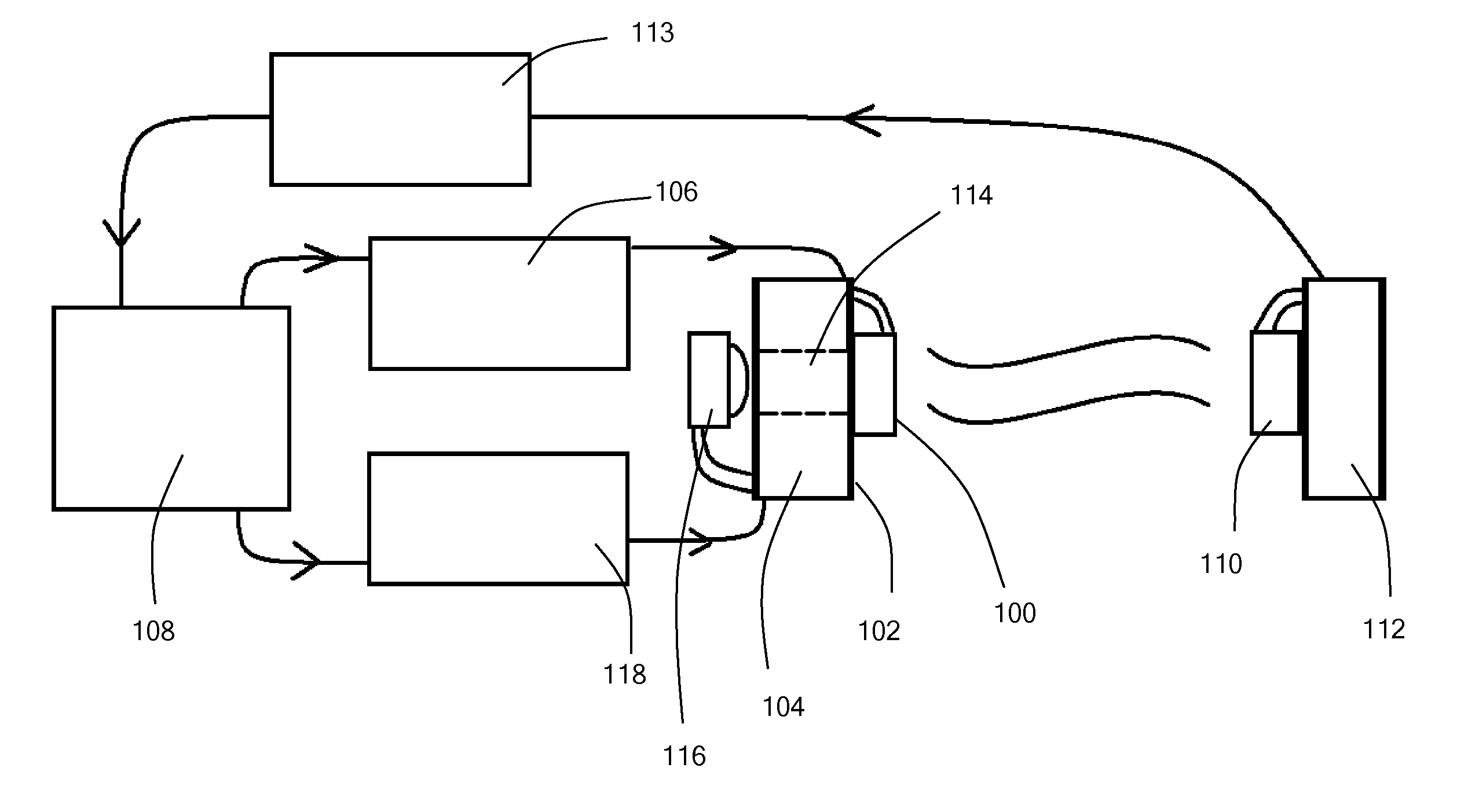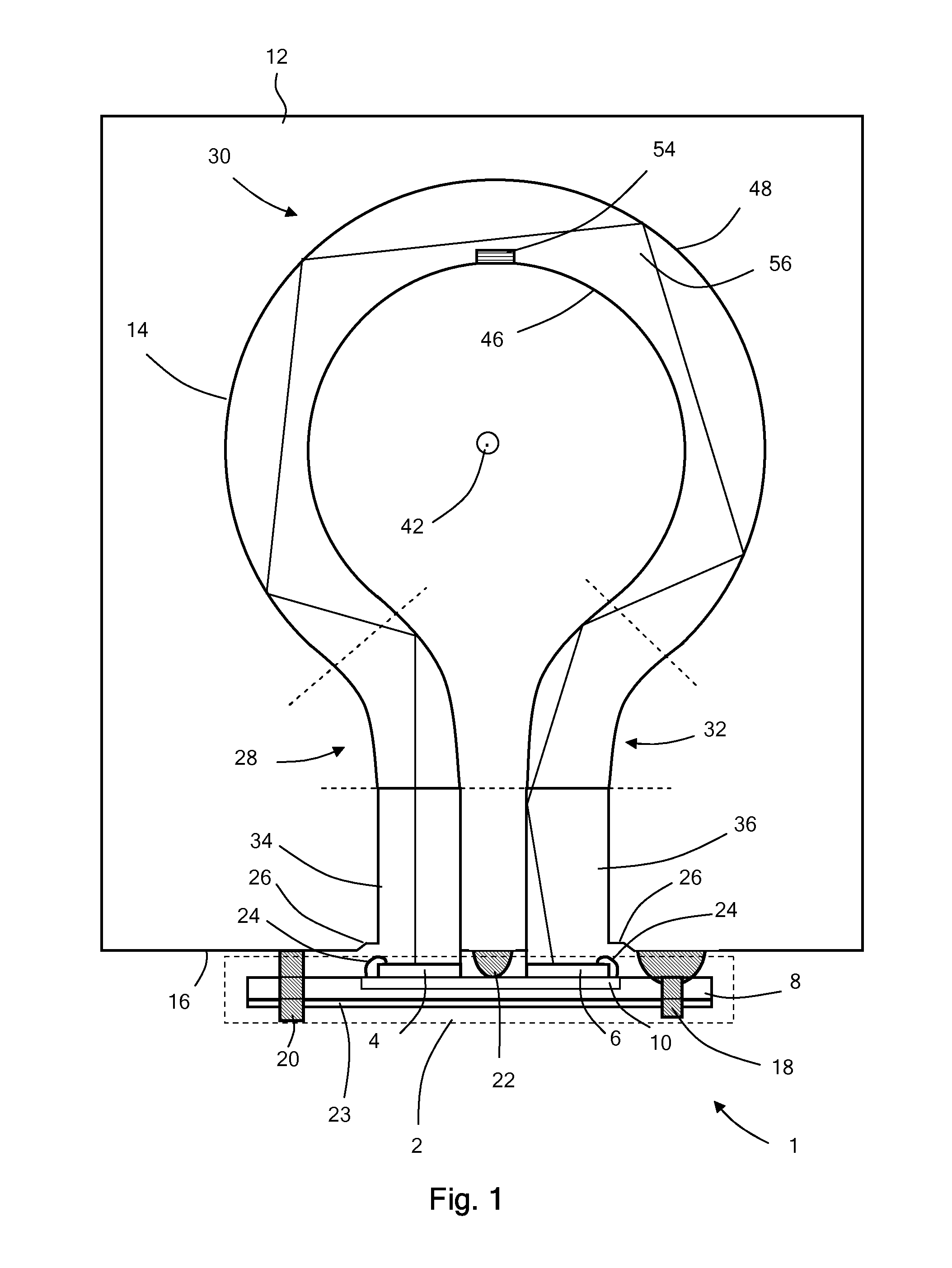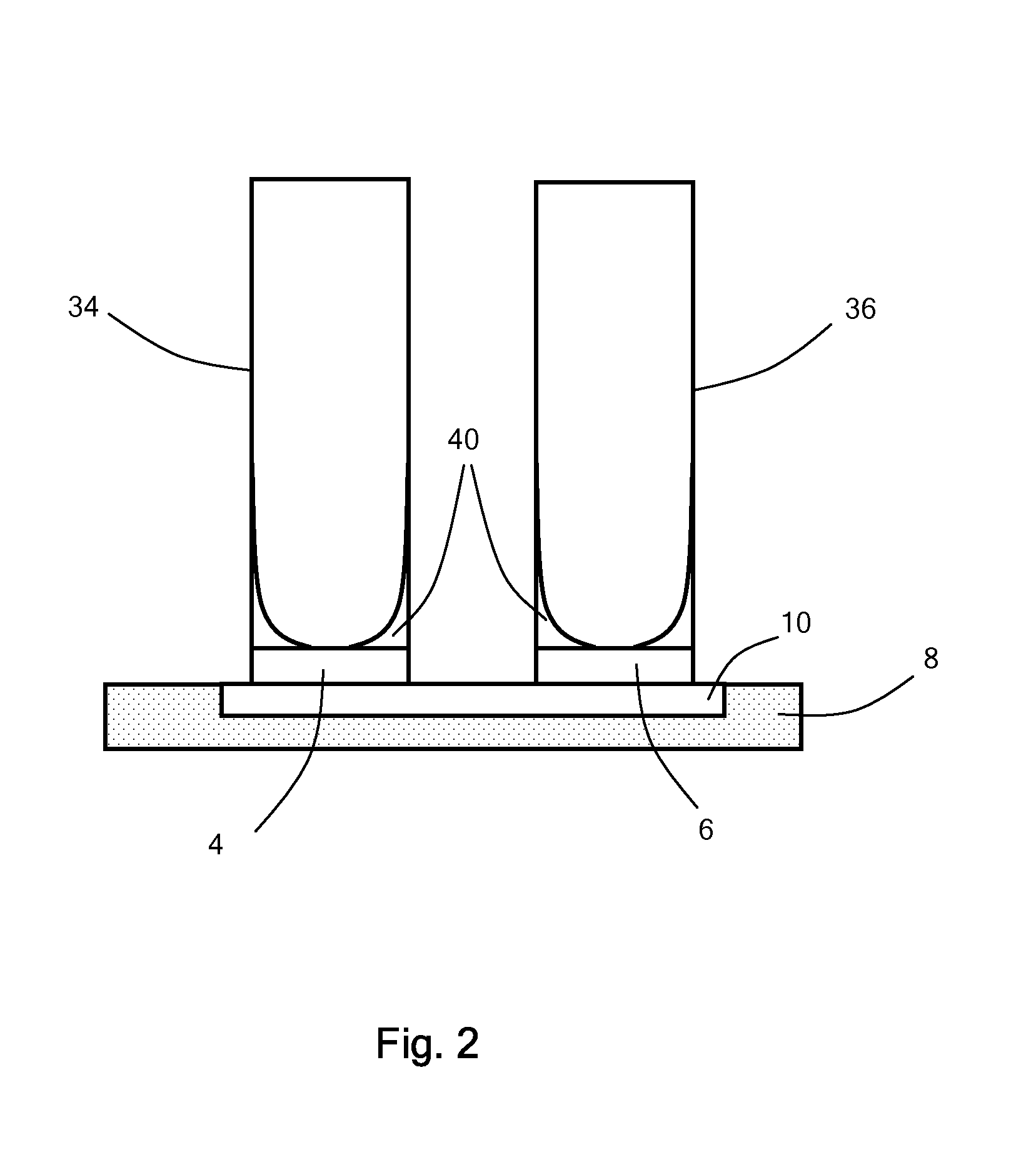Gas sensor with radiation guide
a radiation guide and gas sensor technology, applied in the field of optical absorption gas sensors, can solve the problems of low cost sensor, high cost, and short path length, and achieve the effects of less technical difficulty, lower cost, and higher quality
- Summary
- Abstract
- Description
- Claims
- Application Information
AI Technical Summary
Benefits of technology
Problems solved by technology
Method used
Image
Examples
example 1
[0113]With reference to FIG. 6, a first indium aluminium antimonide light emitting diode 100, which emits radiation with a peak intensity at around 4.3 μm in use, is provided on a first side 102 of a 1.6 mm thick fibreglass resin printed circuit board 104. The first light emitting diode is formed according to EP 0 864 180, EP 0 992 094, and in Haigh, M. K. et al., Applied Physics Letters, vol. 90, 231116 (2007). This first light emitting diode is driven by an electronic circuit 106, under control of a microcontroller 108 to provide electromagnetic radiation which is detected by a photodiode 110. The photodiode is also based on indium aluminium antimonide and is mounted to a printed circuit board 112 which, when used with the gas sensor of FIGS. 1 to 5, is preferably a region of the printed circuit board to which the first light emitting diode is mounted, adjacent the light emitting diode, to facilitate thermal communication between the light emitting diode and the photodiode through...
example 2
[0119]In a second, alternative approach for obtaining a reference measurement, we have found that an indium aluminium antimonide based photodiode will emit light when driven using a conventional light emitting diode driving circuit. Similarly, an indium aluminium antimonide-based light emitting diode according to EP 0 864 180, EP 0 992 094, and in Haigh, M. K. et al., Applied Physics Letters, vol. 90, 231116 (2007), referred to above, can be used as a photodiode by attachment to a conventional photodiode amplifier circuit.
[0120]Thus, in the second example, a light emitting diode is pulsed, as before, and the current at the photodiode is measured to provide a measurement signal. Between each pulse of the light emitting diode, the photodiode is driven to emit radiation, and radiation received at the light emitting diode is measured using an amplifier. In this mode, the radiation emitted by the photodiode is predominantly at a significantly higher wavelength than the radiation emitted ...
PUM
| Property | Measurement | Unit |
|---|---|---|
| Fraction | aaaaa | aaaaa |
| Angle | aaaaa | aaaaa |
| Angle | aaaaa | aaaaa |
Abstract
Description
Claims
Application Information
 Login to View More
Login to View More - R&D
- Intellectual Property
- Life Sciences
- Materials
- Tech Scout
- Unparalleled Data Quality
- Higher Quality Content
- 60% Fewer Hallucinations
Browse by: Latest US Patents, China's latest patents, Technical Efficacy Thesaurus, Application Domain, Technology Topic, Popular Technical Reports.
© 2025 PatSnap. All rights reserved.Legal|Privacy policy|Modern Slavery Act Transparency Statement|Sitemap|About US| Contact US: help@patsnap.com



